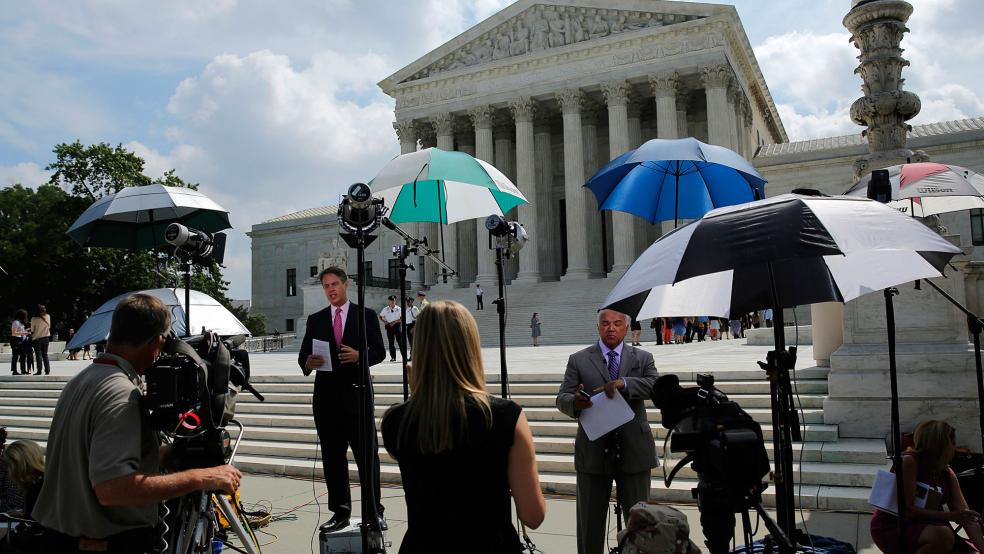With less than one month to go until the Supreme Court issues a ruling in King v. Burwell -- the case that could dismantle Obamacare -- some states are preparing contingency plans to avert a disaster if the court strikes down access to federally subsidized health care for their residents.
If the Court rules against the administration and says that language in the Affordable Care Act only provides subsidies to people enrolled in coverage in states that set up their own marketplaces, some 7.5 million people in the 34 states relying on the federal exchange would lose their subsidized coverage - unless Congress or state legislatures step in.
Related: Some States Are in Debt Over Obamacare Exchanges
Though some lawmakers on Capitol Hill have floated plans to keep the subsidies flowing through the federal exchange, those plans all include provisions to shift away from Obamacare—something President Obama would almost certainly veto.
That leaves contingency plans up to the individual states currently relying on the federal exchange. Under the health law, states that chose to create their own exchanges got federal funding to build their own websites and pay for outreach efforts. The other 34 states decided to rely on the federal portal, HealthCare.gov.
As the court case looms, state lawmakers are considering setting up their own exchanges or using workarounds to assure that their residents who are enrolled in health coverage on the exchange can continue receiving federal subsidies. Nearly 87 percent of all Obamacare enrollees qualify for a subsidy, depending on their annual household income.
Last week, Pennsylvania’s Democratic Gov. Tom Wolf announced that his state would create its own exchange in the event that the Court strikes down the federal subsidies.
Related: Why Obamacare’s Portal Still Needs a Brand Makeover
“In order to protect 382,000 Pennsylvanians from potentially losing subsidies that help them afford health care coverage, I have written to the federal government outlining a contingency plan to set up a state-based marketplace to ensure no one loses their health coverage,” Wolf said in a statement.
Other states, like Ohio, are considering using workarounds where they would pass language establishing a state exchange, but then rely on the federal portal’s website so they wouldn’t have to build their own.
Separately, some states, including Louisiana, have ruled out any kind of contingency plan. In March, Gov. Bobby Jindal penned an op-ed in National Review Online, urging his fellow Republican governors not to try to “save Obamacare subsidies.”
Most of the states that vowed not to set up state exchanges have Republican-controlled state legislatures or governors that staunchly oppose Obamacare.
Of course, it’s not just politics. The cost of setting up state exchanges has weighed heavy on some states’ budgets. In fact, about half of the 17 states that set up their own marketplaces are now facing financial issues.
Related: Obamacare’s Fate Rests on an Argument on States’ Rights
California, for example, is running a deficit of $80 million on its Obamacare exchange, which has already cost $1 billion. Other states that had trouble with their websites have also run into funding issues at a time when the federal government is counting on the state exchanges to become self-sustaining this year.
Vermont officials are contemplating switching to the federal portal, since their exchange is projected to cost about $200 million by the end of the year.
Speaking to reporters at a health care conference in California, Caroline Pearso, senior vice president of Avalere Health, said that states are struggling and will continue to struggle to figure out how to keep their exchanges sustainable.
The financial concerns for already-established state exchanges sets up a difficult decision for states relying on the federal exchange in the event of adverse Court ruling—where they will have to decide whether to find revenue sources to pay for their own exchange—or let hundreds of thousands of people lose their subsidies. Many are just waiting to see what the Court’s decision will be.
The ruling is expected in June.
Top Reads from The Fiscal Times:





